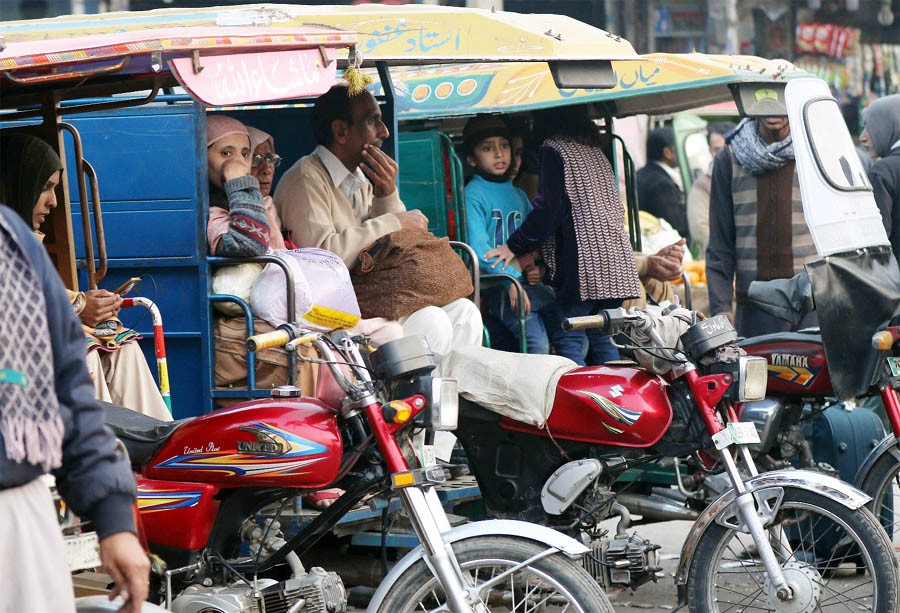
Lahore continues to suffer from suburban low density and car dependence. The mantra of more-roadsless-traffic has failed miserably in the absence of a robust public transport network

The city’s population is growing fast, and it’s densifying in pockets and on some arterials. But on the whole, Lahore still suffers from suburban low density and car dependence. More people, more private vehicles and less public transit means massive traffic within the city.
Over time, the city has experienced an urban sprawl with villages, which were first on the periphery of Lahore, becoming part of the city. This resulted in the Built-up Area Density (BAD) of Lahore to be 391 persons per hectare (circa 2013), indicating an increase at an average annual rate of 0.2 percent since 2000 when it was 382 persons per hectare. Going further back, in 1991, it was measured to be 301.65 persons per hectare.
The metropolis covering an area of 1,772 sq kms is home to more than 11 million people, and while it is designed to hold only a fraction of that, the number is growing. According to the 6th population census conducted in 2017, Lahore’s headcount stood at 11,126,285 as compared to 5,143,495 in the previous census (conducted in 1998). This shows that from 1998 to 2017, Lahore’s populations grew by a staggering 116.3 percent respectively.
Lahore has been experiencing with many citizens opting for private car ownership. The city planners have been knowingly or unknowingly supporting this trend by laying down a network of roads in and around the city. The share of built-up area in Lahore occupied by roads in the 1990-2014 expansion area was 24 percent compared to 20 percent before 1990.
Instead of investing more in the public sector, the city witnessed an increased focused on the widening of the existing roads, signal-free corridors, and new roads. The mantra of more-roads-less-traffic has miserably failed in the absence of a robust public transport network which has resulted in increasing traffic woes for citizens.
Public transport is the only way to reduce the number of people relying on private cars for transport but unfortunately the urban mass transit is of poor quality and insufficient for the population. According to the World Bank’s Urban Transport Toolkit, in order for an efficient public transport to function in an urban centre there ought to be between 0.5 to 1.2 buses per 1,000 people.
Further, the toolkit states that the district of Lahore having a population of over 11 million would require roughly 11,000 full-sized buses at one bus per 1,000 people, or 5,500 buses for one bus per 2,000 people. It is estimated that the current fleet of public transport in Lahore is around 400 buses -- 200 each respectively of Punjab Mass Transit Authority (PMTA) and Lahore Transport Company (LTC), 700 wagons (LTC), and an estimated 55 thousand rickshaws and contract carriages or taxis (LTC).
Furthermore, the requirement is still four to eight times than the 1,574 buses mentioned in the eight-phase plan outlined by the PMTA to address the city’s urban transport woes. The integrated public transport network for Lahore suggests connecting 1,318 kms of the city roads via 122 routes.
To better understand the ambitious plan of the PMTA which has yet to see the light of the day, currently around 200 buses (of PMTA) ply on some 14 routes, known as feeder routes, for the Lahore Metro bus project. Another 200 buses on seven routes are being operated by the LTC. So, a total of 400 buses, excluding the Lahore Metro Project.
Understanding the need of a well-functioning transport system the LTC has already sent a proposal to the provincial government to release funds for the procurement of around 208 buses for 12 routes of the city. "If we take into account the Lahore Metro Bus Service and Orange Line Train Service, the city of Lahore still needs 1,500 plus buses on an urgent basis," says Zafar Ahmed Quraishi, Chief Operating Officer at LTC.
He speaks of having "already sent a proposal to the government to introduce a fleet of 208 buses in the first phase on a public-private model. We are hopeful that the needful will be done to provide relief to the commuters [in Lahore]."
In order to commute with ease in Lahore, the city resident population wishes to see good accessibility of public transport systems by all with integration of other modes of transport such as walking and cycling in an integrated and seamless manner.
Discussion on urban transport improvement becomes meaningless without financial planning and accountability for transformative changes. Lahore is still far from reporting an effective and substantial shift towards public transport systems. There is no clear strategy for such shifts -- though master plans and city mobility plans of the city have targetted at least 80 to 90 percent public transport ridership by the year 2025.
While global learning shows that it is difficult to arrest and reverse the slide in public transport ridership, some cities like London and Paris have reported an improvement by incentivising urban transport commuting. The question then remains that is Lahore prepared? How will the already functioning transport companies balance affordable and sustainable public transport systems while making huge investments to increase public transport supply? Even the existing undersupply of public transport is unable to sustain itself financially while there is a huge gap to be bridged as far as the demand of urban transport is concerned for the city.